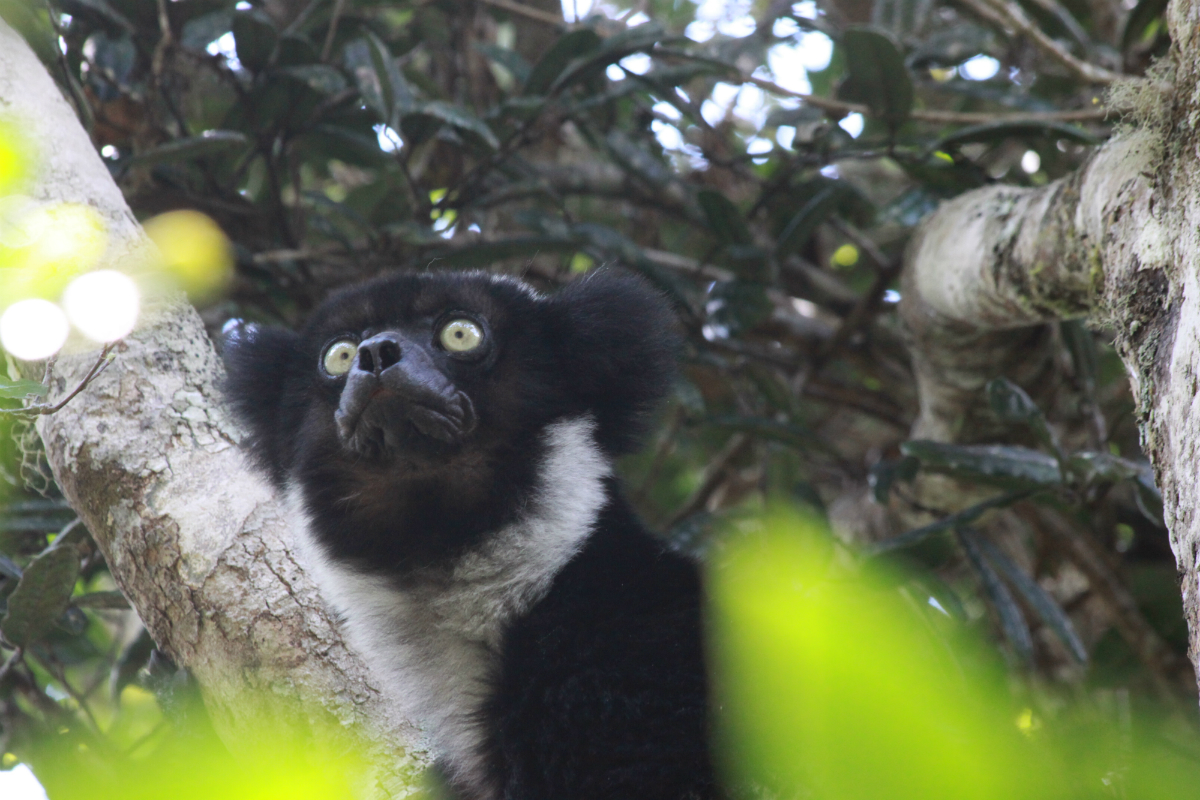When Lemurs Sing, Young Males Follow a Different Beat

In a species of singing lemur, young males grab attention by crooning to a different beat than the rest of the chorus.
Researchers have found that indris, a type of lemur native to Madagascar, are not only accomplished singers but also use rhythmic techniques when singing together to coordinate vocal performances and define their roles in the troop.
Most of the chorus members synchronize their songs, but low-ranking males belt out vocalizations that are deliberately out of sync with other members of the community chorus, performing a call-and-response type of number. [Video: Madagascar Indris Make Beautiful Music Together]
Turn the beat around
The indri (Indri indri) is one of the largest living lemur species, weighing about 15 lbs. (6.8 kilograms) on average. It is the only species of singing lemur, and one of only four nonhuman primate families known to sing. Indris live in Madagascar's mountain rainforests in small, close-knit groups that frequently raise their voices together to advertise the size and strength of the community to rivals; these songs can be heard for miles, the researchers noted.
Many animal species — most notably, birds — are known for their singing. But evidence of songs that follow a regular and predictably rhythmic beat is rare in animals, the authors said in the study. To find out if indris' group singing followed predictable rhythms, the researchers analyzed 496 indri songs across various groups in Madagascar, capturing recordings and evaluating the timing, pitch and rhythm of individuals in the group.
The researchers discovered that the indri singers not only showed highly organized vocalization but also followed specific beats within the songs — either to blend their voices with the group, or to make their own sounds stand out more.
The indri's song is distinctive, and contains a long sequence of phrases. The study authors described it as starting with a series of harsh roars, which might serve as a way to get everyone's attention. The roars are followed by a succession of long whoops, which spiral into a pattern of shorter vocalizations that descend in frequency.
Get the world’s most fascinating discoveries delivered straight to your inbox.
The scientists observed that group performances began with a single voice — one indri would start singing, and then all members of the group that were over 2 years of age would join in, copying each other's rhythms to create a synchronized performance.
Don't stop the music
When the indris were synchronized, their songs were louder — a definite advantage when warning potential rivals to stay away from your territory, study co-author Giovanna Bonadonna, a doctoral student at the University of Turin in Italy, said in a statement. Synchronized singing could also be used by the indris to strengthen pair bonds and reinforce community ties within the troop, she added.
But the scientists also discovered that there were exceptions to the synchronized communal performances. Young males tended to sing in antiphony — a call-and-response style that draws more attention to single voices — rather than blending their voices in with the general chorus.
Low-ranking males were the most likely to employ this type of singing, and were probably using this important group activity as an opportunity for self-promotion, Bonadonna said.
"This lets them advertise their fighting ability to members of other groups and signal their individuality to potential sexual partners," Bonadonna said in the statement.
The indris' vocal prowess makes them good candidates for future studies about the evolution of communication in humans, the authors said, as the pace of the indris' exchanges and the back-and-forth interplay are reminiscent of the rhythms of modern human conversation.
The findings were published online June 14 in the journal Frontiers in Neuroscience.
Original article on Live Science.

Mindy Weisberger is a science journalist and author of "Rise of the Zombie Bugs: The Surprising Science of Parasitic Mind-Control" (Hopkins Press). She formerly edited for Scholastic and was a channel editor and senior writer for Live Science. She has reported on general science, covering climate change, paleontology, biology and space. Mindy studied film at Columbia University; prior to LS, she produced, wrote and directed media for the American Museum of Natural History in NYC. Her videos about dinosaurs, astrophysics, biodiversity and evolution appear in museums and science centers worldwide, earning awards such as the CINE Golden Eagle and the Communicator Award of Excellence. Her writing has also appeared in Scientific American, The Washington Post, How It Works Magazine and CNN.
 Live Science Plus
Live Science Plus






